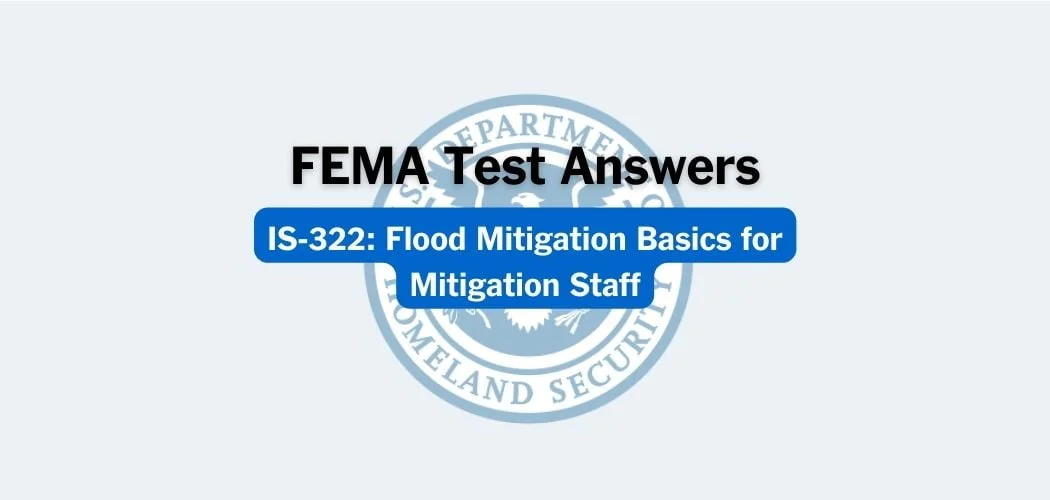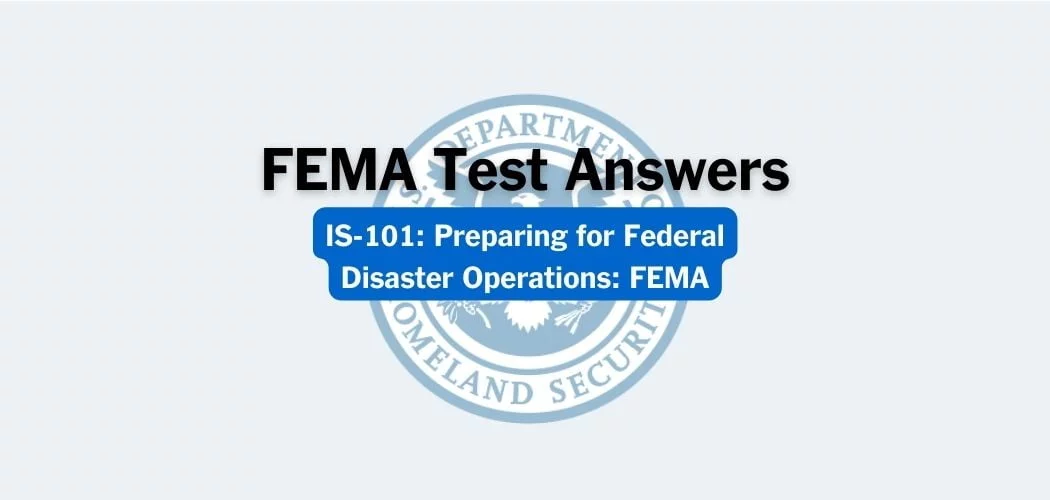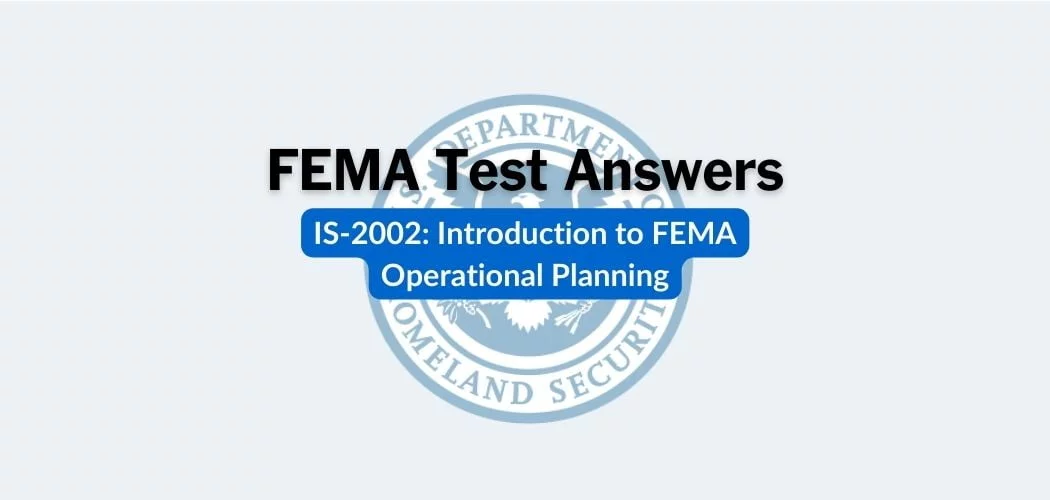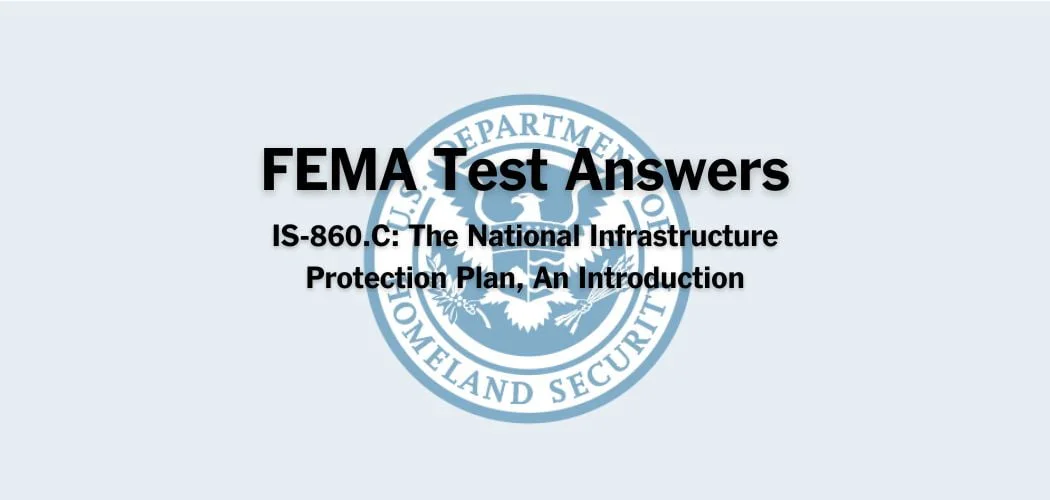Overview: The FEMA IS-360 course was published on 6/24/2013 to provide resources to elementary and secondary schools, higher education, and the house of worship in developing emergency plans for preparing for, responding to, and recovering from mass casualty incidents.
Primary audience: FEMA IS-360 is for the whole community. The objective is for the participants to identify key considerations and strategies for preparing for mass casualty incidents. The audience for this course is the whole community.
FEMA IS-360 test answers
Each time this test is loaded, you will receive a unique set of questions and answers. The test questions are scrambled to protect the integrity of the exam.
Question 1. A security assessment is a/an:
A. Interdisciplinary approach to assessing potential threats posed by individuals whose behavior appears suspicious.
B. One-time analysis of safety-related policies that may relate to mass casualty incidents.
C. Ongoing process for identifying and evaluating potential areas of weakness that could have adverse consequences.✅
D. Evaluation that focuses primarily on ways security technology can be used to safeguard the physical environment, including grounds and facilities.
Question 2. All of the following are effective practices for managing public information after a mass casualty incident EXCEPT:
A. Avoid the media or tell them “no comment” until all facts have been collected and verified.✅
B. Make information available in diverse, culturally appropriate, and age-specific formats.
C. Agree with community partners to speak as one voice, channeling information through a Public Information Officer.
D. Keep updated information flowing, as more information becomes available.
Question 3. In managing public information after a mass casualty incident, it is a good practice to avoid the media or tell them “no comment” until all facts have been collected and verified.
A. TRUE
B. FALSE✅
Question 4. In managing public information after a mass casualty incident, it is important for community partners to speak as one voice, channeling information through a Public Information Officer.
A. TRUE✅
B. FALSE
Question 5. Evacuation may be an appropriate response action when the danger, such as an active shooter, is at the perimeter of the building and not yet inside.
A. TRUE
B. FALSE✅
Question 6. An effective safety and security program includes policies requiring that anyone who notices concerning behavior, such as violence-related writings, must report it directly to law enforcement.
A. TRUE✅
B. FALSE
Question 7. The main purpose of developing and conducting periodic drills and other exercises is to:
A. Ensure that your facility will be able to handle all emergency situations without help from community organizations.
B. Prevent potential mass casualty incidents from occurring in or near your organization’s facility.
C. Identify needed improvements in how your organization carries out response procedures.✅
D. Demonstrate that expenditures for security-related systems and equipment are necessary investments.
Question 8. An emergency lockdown allows for limited normal activities to take place, such as continued teaching and movement in hallways while the situation is investigated and addressed.
A. TRUE
B. FALSE✅
Question 9. All of the following are good practices when conducting exercises, EXCEPT:
A. Vary the conditions (e.g., time of day, type of activities) under which the exercises are conducted.
B. Conduct exercises at least annually, and whenever procedures are developed or revised.
C. Complete full-scale exercises to test multiagency coordination before determining the objective of a tabletop exercise.✅
D. Train all participants in the procedures before conducting drills or other exercises in which the procedures will be used.
Question 10. The main goal of providing training on the emergency plan is to:
A. Ensure that the media are aware of security measures being implemented.
B. Keep personnel vigilant and informed of crisis procedures.
C. Dispel rumors that may arise in the community regarding mass casualty incidents.
D. Identify gaps in resources, planning, or assumptions.✅
Question 11. Select the FALSE statement from below.
A. Anyone who will be involved in implementing the plan should be involved in creating it.
B. Mass casualty response planning should be part of an all-hazards approach to planning.
C. Involving stakeholders in the planning process for mass casualty incidents has little benefit and may cause panic.✅
D. A partnership approach to planning fosters a whole community committed to enhancing safety and security.
Question 12. Security assessment inspections should always be conducted at the same time and day of the week, when the building and grounds are unoccupied.
A. TRUE
B. FALSE✅
Question 13. When conducting exercises, it is advisable to vary the conditions (e.g., time of day, type of activities) under which the exercises are conducted.
A. TRUE✅
B. FALSE
Question 14. As soon as a situation involving a dangerous individual becomes evident and you have assessed the situation, you should:
* Communicate the need for others onsite to take immediate protective actions.
* Notify emergency responders.
* Implement the emergency protocols found in your plan.
* Triage injuries and apply emergency first aid as needed.
A. Call someone in your organizational hierarchy to ask for instructions.
B. Activate the fire alarm in the building and any adjacent areas.
C. Take action to protect yourself and those in your immediate area.✅
D. Advise the Public Information Officer that an event is taking place.
Question 15. The main goal of providing training on the emergency plan is to dispel rumors that may arise in the community regarding mass casualty incidents.
A. TRUE
B. FALSE✅



